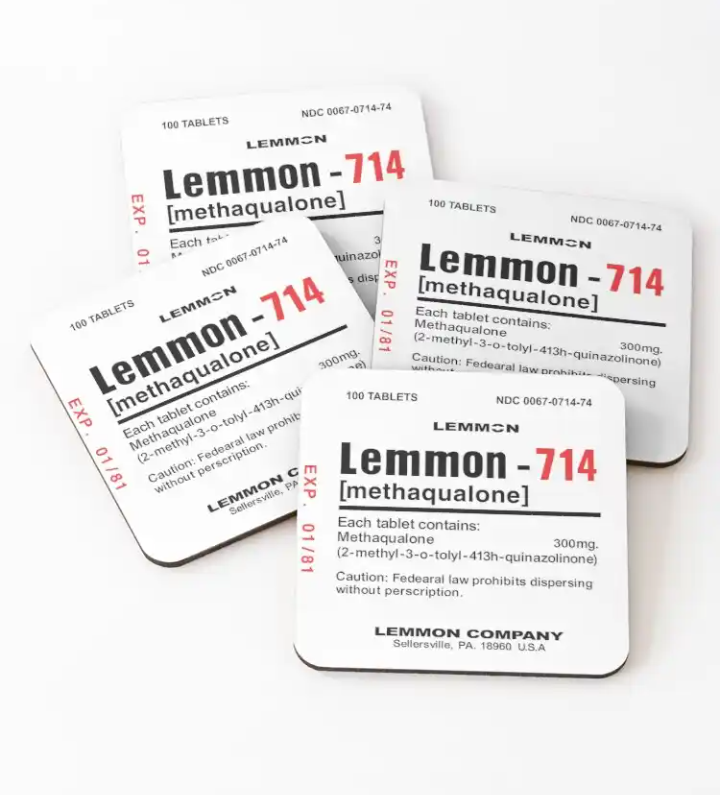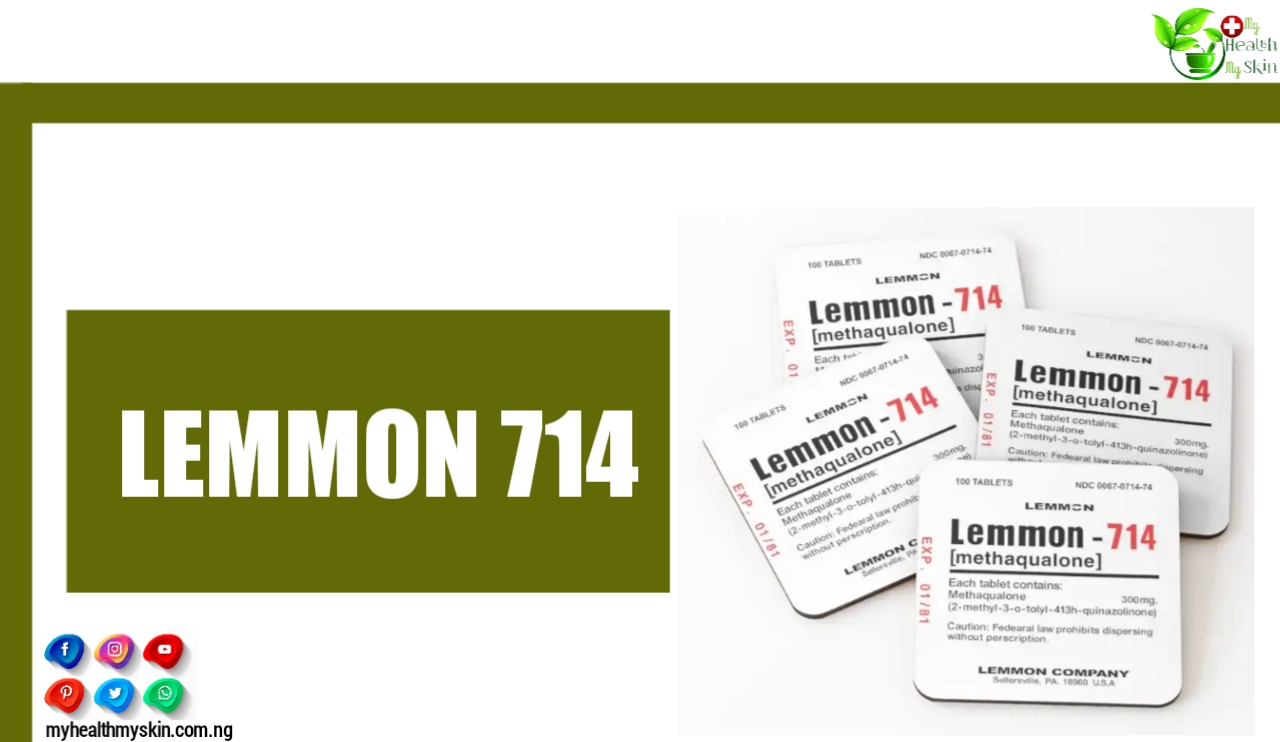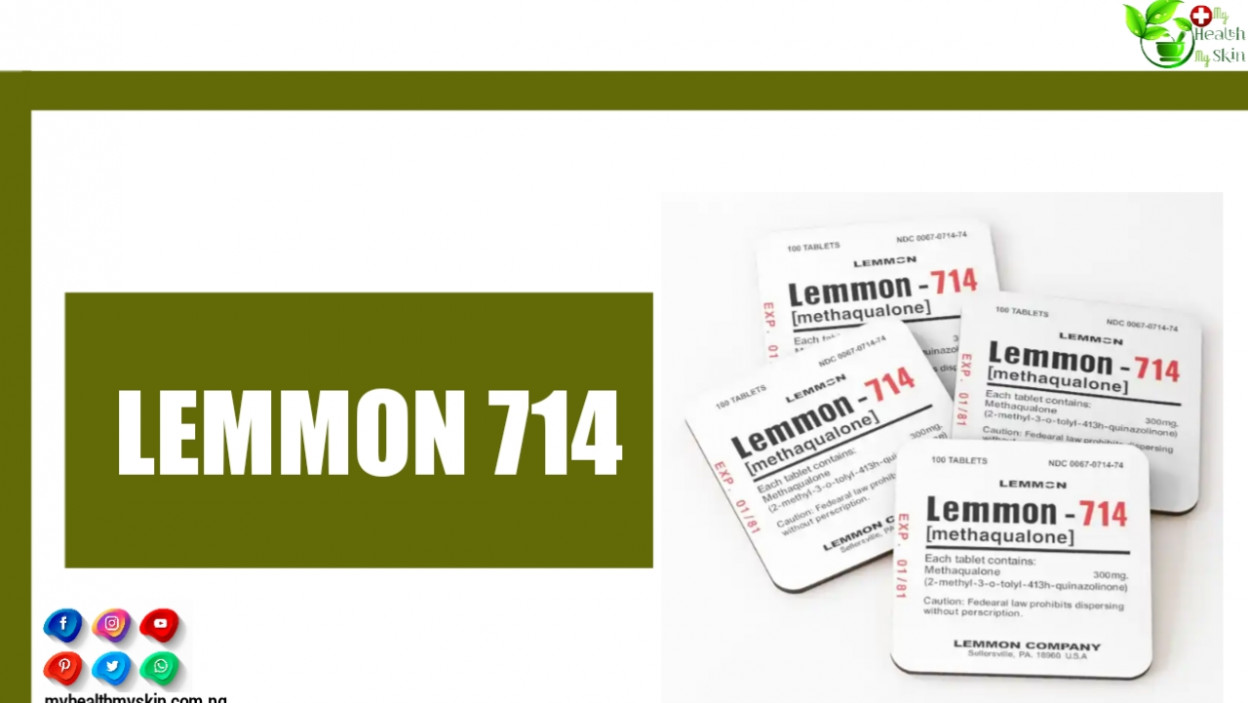The Lemmon 714 is a brand of methaqualone, a calming and soporific medication.
Methaqualone was manufactured in the United States under the brand name Quaalude by the pharmaceutical firms Rorer and Lemmon with the digits 714 imprinted on the tablet, so many people always referred to Quaalude as 714’s, “Lemmons”, or “Lemmon 7’s”.
Methaqualone, was also manufactured in the U.S. under the brand names Sopor and Parest. After the legal manufacture of the drug ended in the in 1982, underground laboratories in Mexico continued the illegal manufacture of methaqualone throughout the 1980s, maintaining the use of the “714” imprint, until their popularity subsided in the early 1990s.
Drugs purported to be methaqualone are in a substantial majority of cases found to be inert, or include diphenhydramine or benzodiazepines.
Keep on reading to get more information about the following topics related to Lemmon 714:
- How To Use
- Side Effects
- Legality
- Addiction
In South Africa, Illicit methaqualone is one of the most commonly used recreational drugs. Manufactured in clandestine, always in unsanitary conditions in India, it comes in tablet form, but is smoked with marijuana; this method of ingestion is called “white pipe”. It is also common elsewhere in Africa and in India.
Recently Lemmon 714 was back in the news after Bill Cosby admitted using them to drug women.
This was because quaaludes or Lemmon 714 was a staple of the America’s recreational drug scene that “everyone remembers fondly.” It’s even been dubbed an “icon of the 1970s,” before it was discontinued in 1985 – partly because of its widespread illegal recreational use.
[lwptoc]

How Does Lemmon 714 Work?
Lemmon 714 is a sedative that increases the activity of GABA receptors in the brain and nervous system, similar to benzodiazepines and barbiturates.
When GABA activity is increased, blood pressure decreases and respiratory and pulse rates slow, resulting in a state of deep relaxation.
These properties explain why methaqualone was originally prescribed primarily for insomnia. Lemmon 714 peaks in the bloodstream within a few hours with a half-life of 20-60 hours.
While the salt methaqualone hydrochloride is typically used clinically, methaqualone free base has also been marketed as the methaqualone component of Mandrax, a combination drug that contained 250 mg of methaqualone and 25 mg of diphenhydramine in the same tablet.
Oral dosage forms of methaqualone hydrochloride have been prepared as capsules, whereas oral dosage forms of methaqualone free base have been prepared as tablets. Regular users build a physical tolerance and require larger doses for the same effects.
Lemmon 714: Abuse and Addiction
Misuse of Lemmon 714 creates a barbiturate-like addiction. It is highly addictive and frequent users build up a tolerance to it, meaning they have to take higher doses to get the same euphoric effects.
This makes Lemmon 714 use dangerous and increases the chances of overdose or death. They can also cause withdrawal symptoms similar to barbiturates, including:
- Vomiting
- Weakness
- Headache
- Insomnia
- Tremors
- Mental Confusion
- Seizures
- Restlessness
- Irritability
- Nausea
Lemmon 714: Overdose
Overdose can result in nervous system shutdown, coma, and death. Other effects include delirium, convulsions, hypertension, hyperreflexia, vomiting, renal failure, coma, and death from cardiac or respiratory arrest.
It is similar to barbiturate poisoning, but with increased motor difficulty and a lower incidence of cardiac or respiratory depression.
The standard dose of a single tablet of Lemmon 714 brand methaqualone for adults was 300 mg when manufactured by Lemmon. A dose of 8000mg is fatal and a dose as low as 2000mg could induce a coma if taken with an alcoholic beverage.
If you want to read more articles similar to Lemmon 714 Pill: Uses, Side Effects, Legality And Addiction, we recommend you visit our Physical & Mental Health category.

Did You Already Know Lemmon 714? Are You In The Habit Of Consuming Sedative Medication? Comment Below!







